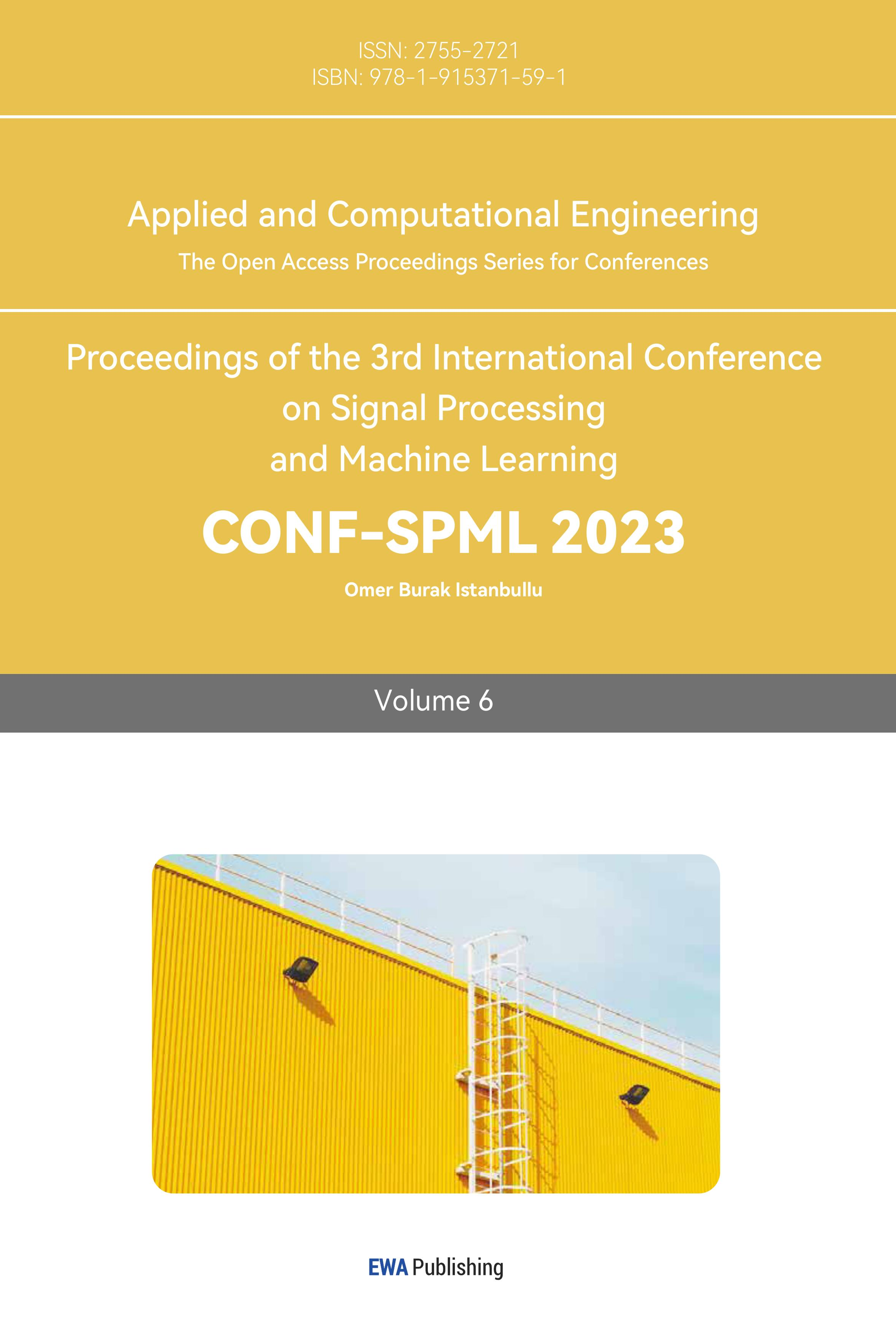References
[1]. Christos G. Bampis, Zhi Li and Alan C. Bovik, “Continuous Prediction of Streaming Video Qo Eusing Dynamic Networks”, IEEE Signal Processing Letters, DOI 10.1109/LSP.2017.2705423.
[2]. H. T. Siegelmann, B. G. Horne, and C. L. Giles, “Computational capabilities of recurrent NARX neural networks,” IEEE Trans. on Sys. Man, and Cyber., vol. 27, no. 2, pp. 208–215, 1997.
[3]. “Ericsson 2013 TV and Media Report,” http: // www. ericsson.com / res /docs /2013 /consumer lab /tv-and-mediaconsumerlab-2013.pdf.
[4]. J. Jiang, V. Sekar, I. Stoica, and H. Zhang, “Shedding Light on the Structure of Internet Video Quality Problems in the Wild,” in ACM CoNext 2013.
[5]. “Maximizing Audience Engagement: How online video performance impacts viewer behavior,” https://content.akamai.com/PG2114-Audience-Engagement-WP.html.
[6]. “ABR Streaming,” http://www.tvtechnology.com/cable-satelliteiptv/ 0149/abr-streaming/239523.
[7]. C. Bovik, “Automatic prediction of perceptual image and video quality,” Proc. IEEE, vol. 101, no. 9, pp. 2008–2024, Sept. 2013.
[8]. D. S. Hands and S. Avons, “Recency and duration neglect in subjective assessment of television picture quality,” Applied cognitive psychology, vol. 15, no. 6, pp. 639–657, 2001.
[9]. S. Tavakoli, S. Egger, M. Seufert, R. Schatz, K. Brunn-strom, and N. Garc´ıa, “Perceptual quality of http adaptive streaming strategies: Cross-experimental analysis of multi-laboratory and crowdsourced subjective studies,” IEEE Journal on Selected Areas in Communications, vol. 34, no. 8, pp. 2141–2153, 2016.
[10]. R. Soundararajan and A. C. Bovik, “Video quality assessment by reduced reference spatio-temporal entropic differencing,” IEEE Transactions on Circuits and Systems for Video Technology, vol. 23, no. 4, pp. 684–694, 2013.
[11]. M. A. Saad, A. C. Bovik, and C. Charrier, “Blind prediction of natural video quality,” IEEE Transactions on Image Processing, vol. 23, no. 3, pp. 1352–1365, 2014.
[12]. Saravanan, S., Kumar, V. V., Sarveshwaran, V., Indirajithu, A., Elangovan, D., & Allayear, S. M. (2022). Computational and Mathematical Methods in Medicine Glioma Brain Tumor Detection and Classification Using Convolutional Neural Network. Computational and Mathematical Methods in Medicine, 2022.
Cite this article
Kirubha,D.;E.,S.V.;V.,B.B.;V.,M.;M.,P. (2023). An integrated functionality framework for robust video streaming heterogeneous networks. Applied and Computational Engineering,6,1400-1405.
Data availability
The datasets used and/or analyzed during the current study will be available from the authors upon reasonable request.
Disclaimer/Publisher's Note
The statements, opinions and data contained in all publications are solely those of the individual author(s) and contributor(s) and not of EWA Publishing and/or the editor(s). EWA Publishing and/or the editor(s) disclaim responsibility for any injury to people or property resulting from any ideas, methods, instructions or products referred to in the content.
About volume
Volume title: Proceedings of the 3rd International Conference on Signal Processing and Machine Learning
© 2024 by the author(s). Licensee EWA Publishing, Oxford, UK. This article is an open access article distributed under the terms and
conditions of the Creative Commons Attribution (CC BY) license. Authors who
publish this series agree to the following terms:
1. Authors retain copyright and grant the series right of first publication with the work simultaneously licensed under a Creative Commons
Attribution License that allows others to share the work with an acknowledgment of the work's authorship and initial publication in this
series.
2. Authors are able to enter into separate, additional contractual arrangements for the non-exclusive distribution of the series's published
version of the work (e.g., post it to an institutional repository or publish it in a book), with an acknowledgment of its initial
publication in this series.
3. Authors are permitted and encouraged to post their work online (e.g., in institutional repositories or on their website) prior to and
during the submission process, as it can lead to productive exchanges, as well as earlier and greater citation of published work (See
Open access policy for details).
References
[1]. Christos G. Bampis, Zhi Li and Alan C. Bovik, “Continuous Prediction of Streaming Video Qo Eusing Dynamic Networks”, IEEE Signal Processing Letters, DOI 10.1109/LSP.2017.2705423.
[2]. H. T. Siegelmann, B. G. Horne, and C. L. Giles, “Computational capabilities of recurrent NARX neural networks,” IEEE Trans. on Sys. Man, and Cyber., vol. 27, no. 2, pp. 208–215, 1997.
[3]. “Ericsson 2013 TV and Media Report,” http: // www. ericsson.com / res /docs /2013 /consumer lab /tv-and-mediaconsumerlab-2013.pdf.
[4]. J. Jiang, V. Sekar, I. Stoica, and H. Zhang, “Shedding Light on the Structure of Internet Video Quality Problems in the Wild,” in ACM CoNext 2013.
[5]. “Maximizing Audience Engagement: How online video performance impacts viewer behavior,” https://content.akamai.com/PG2114-Audience-Engagement-WP.html.
[6]. “ABR Streaming,” http://www.tvtechnology.com/cable-satelliteiptv/ 0149/abr-streaming/239523.
[7]. C. Bovik, “Automatic prediction of perceptual image and video quality,” Proc. IEEE, vol. 101, no. 9, pp. 2008–2024, Sept. 2013.
[8]. D. S. Hands and S. Avons, “Recency and duration neglect in subjective assessment of television picture quality,” Applied cognitive psychology, vol. 15, no. 6, pp. 639–657, 2001.
[9]. S. Tavakoli, S. Egger, M. Seufert, R. Schatz, K. Brunn-strom, and N. Garc´ıa, “Perceptual quality of http adaptive streaming strategies: Cross-experimental analysis of multi-laboratory and crowdsourced subjective studies,” IEEE Journal on Selected Areas in Communications, vol. 34, no. 8, pp. 2141–2153, 2016.
[10]. R. Soundararajan and A. C. Bovik, “Video quality assessment by reduced reference spatio-temporal entropic differencing,” IEEE Transactions on Circuits and Systems for Video Technology, vol. 23, no. 4, pp. 684–694, 2013.
[11]. M. A. Saad, A. C. Bovik, and C. Charrier, “Blind prediction of natural video quality,” IEEE Transactions on Image Processing, vol. 23, no. 3, pp. 1352–1365, 2014.
[12]. Saravanan, S., Kumar, V. V., Sarveshwaran, V., Indirajithu, A., Elangovan, D., & Allayear, S. M. (2022). Computational and Mathematical Methods in Medicine Glioma Brain Tumor Detection and Classification Using Convolutional Neural Network. Computational and Mathematical Methods in Medicine, 2022.









